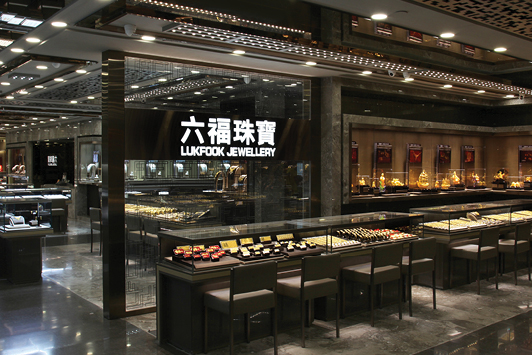
Hong Kong jewelers signal return to growth
Two-year market slump reversing
In China’s Year of the Rooster, the major Hong Kong jewelers are starting to
stir from their slumber. Chow Tai Fook and Luk Fook Holdings reported rising
sales for the first fiscal quarter, which ended June 30, after consistent
declines in the past two years.
Improved consumer spending is spurring growth in mainland
China, while Hong Kong is also showing signs of life as tourists return there:
Arrivals grew 3.2% in the first five months of 2017, according to the Hong Kong
Tourist Board.
Jewelry sales have slumped since 2014, after a decade of
rapid expansion. Many have attributed the decline to growing pains as China’s
economy transitions from a dependence on exports and infrastructure investment
to being consumer-driven.
Decisions to stem capital leaving the country, raise taxes
on certain imports, and devalue the yuan currency were in part designed to
encourage local spending — and it has taken consumers time to adjust. At the
same time, President Xi Jinping’s anti-corruption campaign, which cracked down
on gift-giving to officials, impacted luxury sales as the public scaled down
open displays of wealth.
It appears consumers have settled into the new reality; the
economy has improved, and jewelry sales seem to have bottomed out. Diamond
jewelry demand in China grew 0.6% in local currency terms in 2016 and has
continued to rise in early 2017, De Beers said in a research report.
Meanwhile, China’s economy grew 6.9% in the second quarter,
mirroring the first-quarter rate and outpacing last year’s 6.7% expansion.
Retail played its part, with overall sales up 10.4% for the period, and gold,
silver and jewelry sales rising 7.9%, according to government data.
Jewelers are hoping the trend will continue into the busier
second half of the fiscal year, when the October 1 National Day, Christmas, and
Chinese New Year holidays occur. If it does, this Year of the Rooster could
signal a reawakening of the Chinese diamond and jewelry market and prove to be
its turning point back toward growth.
Taxing issues: Breaking down India’s GST
How will the new system affect the industry? Here’s what you need to know
Change tends to breed uncertainty, especially when it comes to significant
policy decisions like India’s goods and services tax (GST). The system, which
went into effect on July 1, aims to simplify the country’s tax code, replacing
a complex list of national and regional levies with one overriding system.
However, its implementation has stirred mixed reactions in
the diamond and jewelry trade, with some noting it’s not as simple as intended.
The Gem & Jewellery Export Promotion Council (GJEPC) has expressed concern
it will harm India’s position in the global market.
The system will benefit the more organized jewelry
retailers, as their size will enable them to handle the tax more efficiently,
according to Crisil, a subsidiary of ratings agency Standard & Poor’s.
Smaller, independent jewelers will be forced to keep formal accounts of their
business, the World Gold Council (WGC) added.
As GST goes into effect, there is still some uncertainty
about what the rates are and who has to pay them. Rapaport Magazine sets out
the key points that will affect the diamond and jewelry industry, based on a
document the GJEPC has released.
- A new 3% tax on jewelry —
including gold and polished diamonds — replaces a 1% excise duty and 1%
value-added tax imposed by individual states.
- There is a new tax of 0.25%
for rough diamonds and other rough gemstones.
- Introduction of a 5% tax on
manufacturing, which previously did not exist.
- Services for customers,
such as making and repairing jewelry, carry the higher rate of 18%.
- Accredited laboratories may
import diamonds for grading and then re-export without paying GST.
- Polished diamonds weighing
0.25 carats or more that have been sent abroad to a grading laboratory are
exempt from GST for companies with annual export turnover of above $770,000
(INR 50 million) in each of the past three years. GST does not apply when these
stones return to India, as long as it’s within three months of the initial
export.
- Companies that send goods
to display at an exhibition in another state are not required to pay GST.
- Goods imported from
overseas for a trade show do not incur tax.
- Re-imports of goods that a
company originally sent out on consignment (or memo) may incur tax, according
to the GJEPC.
- Exports do not require
payment of GST. Neither does supply to the special economic zone (SEZ) in
Mumbai, a duty-free area in the Bharat Diamond Bourse for rough trading.
Image: Lukfook JewelleryArticle from the Rapaport Magazine - August 2017. To subscribe click here.